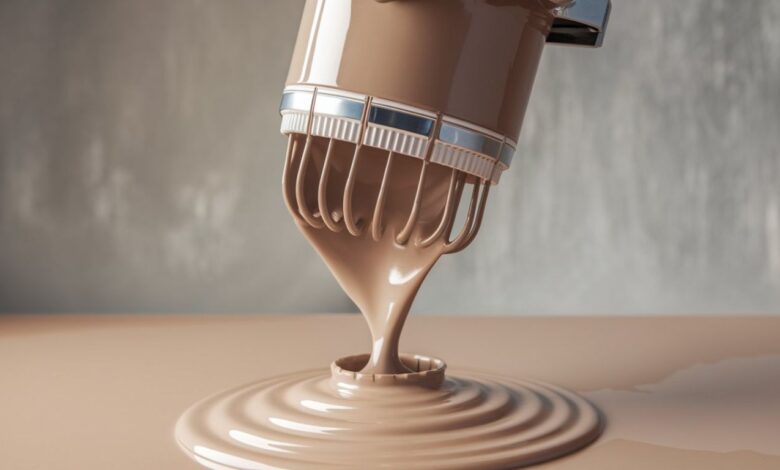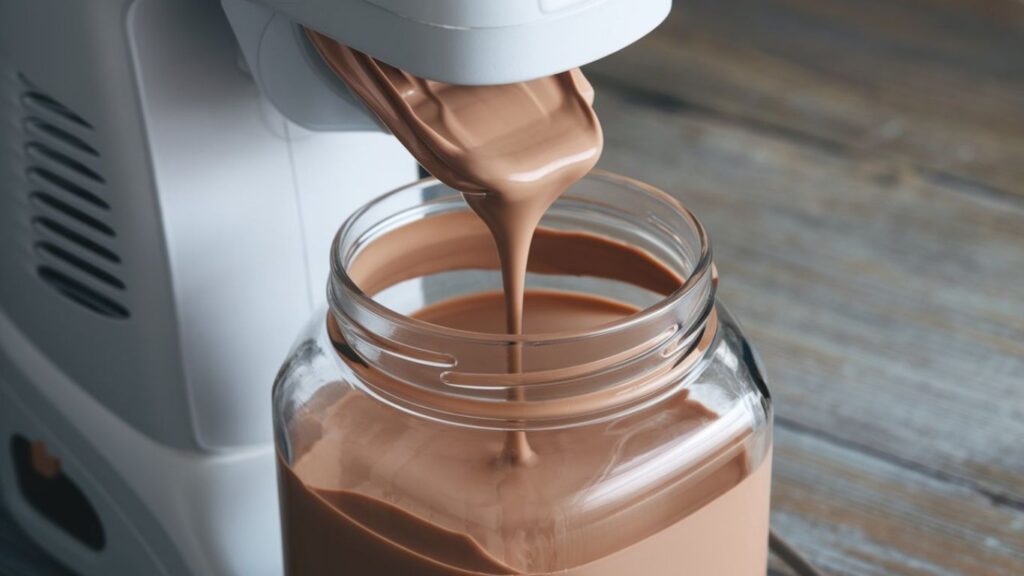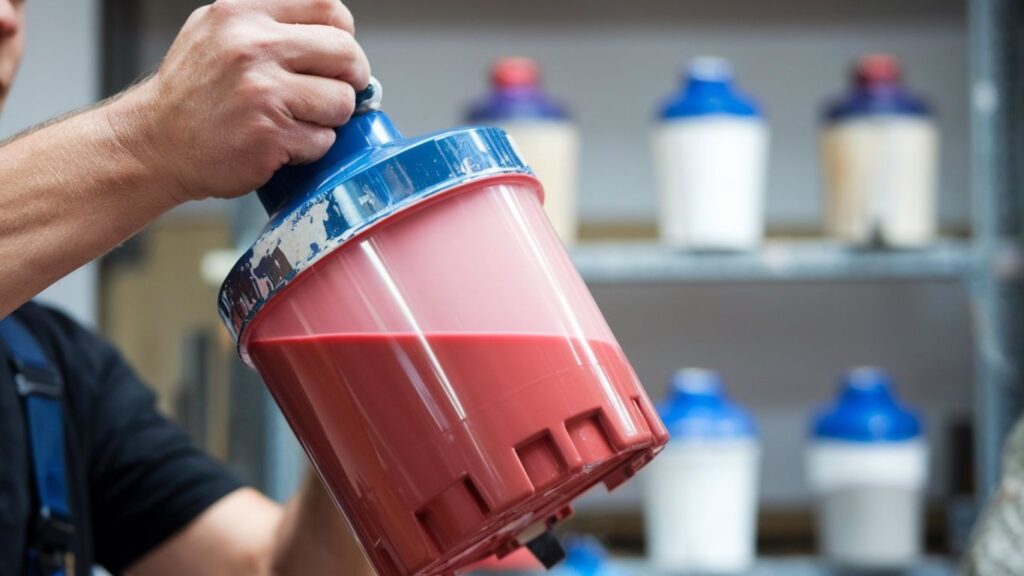Paint Shaker Power: The Secret to Flawless Finishes

Having experience with either watery or thick paint will teach you about the challenges of achieving even results with a brush. A paint shaker functions as a critical tool which guarantees fully mixed paint regardless of your workplace in residential home renovations or professional paint shops. This article explains all the essential information regarding paint shakers while examining their operation methods as well as their value to your project outcomes.
What Is a Paint Shaker?

A paint shaker is a mechanical or manual device used to mix paint cans thoroughly. Instead of relying on stirring sticks or muscle power, this machine shakes the can at high speed to blend all components evenly—pigment, binder, and solvent.
Paint shakers are commonly found in paint stores, hardware shops, auto body shops, and even home garages. They’re designed to ensure a smooth, uniform consistency that improves how paint looks and performs when applied to any surface.
How Does a Paint Shaker Work?
Paint shakers operate by rapidly oscillating the paint can, usually in a dual-axis or orbital motion. This movement redistributes settled pigments and binders evenly throughout the liquid. The consistent agitation reduces air bubbles and prevents paint separation, allowing for a silky-smooth finish when applied with a brush, roller, or sprayer.
Why Use a Paint Shaker?
Using a paint shaker isn’t just about convenience—it’s a smart way to improve your painting process and overall results.
Benefits of Using a Paint Shaker
Consistency: A paint shaker ensures all the ingredients in the paint are evenly mixed, resulting in a flawless, streak-free application. It eliminates the risk of patchy coverage due to uneven pigment distribution.
Efficiency: Manually stirring thick paint can be time-consuming and physically tiring. A paint shaker automates the process, saving you valuable time—especially when dealing with large or multiple cans.
Revives Old Paint: Over time, paint components separate. A shaker can bring old paint back to life by re-blending it to its original state. This helps you avoid wasting partially used cans.
Reduces Waste: Properly mixed paint spreads better, covers more surface area, and reduces the need for extra coats or touch-ups.
Professional Finish: Whether you’re painting walls, furniture, or vehicles, a smooth mixture guarantees a clean, uniform coat that enhances the final appearance.
Types of Paint Shakers
Choosing the right type of paint shaker depends on your usage—whether you’re a casual DIYer or running a busy paint shop.
Manual Paint Shakers
Manual paint shakers typically require hand-cranking or shaking. These are best for small paint jobs or occasional use. While budget-friendly and simple to operate, they may not be ideal for larger projects or high-viscosity paints.
Electric Paint Shakers
Electric models offer high-speed, automatic mixing with minimal effort. Popular among professionals and frequent users, they can handle multiple cans and heavier workloads with consistent results. Many come with adjustable timers and safety features.
Pneumatic Paint Shakers
Pneumatic shakers are air-powered and commonly used in industrial or commercial settings. They provide powerful, rapid mixing and are ideal for auto shops or manufacturing plants where efficiency and durability are critical.
Portable vs. Stationary Paint Shakers
Portable Shakers: These lightweight models are easy to move and suitable for home users or mobile contractors. They’re great for flexibility and smaller spaces.
Stationary Shakers: These heavy-duty machines are designed to stay in one place. They’re commonly found in paint stores or high-volume workspaces, capable of mixing several cans back-to-back with little downtime.
Key Features to Look for in a Paint Shaker

When shopping for a paint shaker, it’s important to choose a model that matches your needs. Look for the following features:
- Adjustable Timers: Lets you control mixing duration based on paint condition.
- High RPM: Ensures thorough blending in less time.
- Multican Compatibility: Supports different sizes like quarts, gallons, and liters.
- Noise Reduction: Some models offer quiet operation, ideal for indoor use.
- Safety Clamps & Locks: Secure the paint can firmly to prevent spills or accidents.
- Durability: A strong build with metal parts and stable construction will last longer under frequent use.
These features can dramatically affect both the ease of use and the final outcome of your paint project.
How to Use a Paint Shaker Properly
Step-by-Step Instructions
- Seal the Paint Can: Ensure the lid is tightly closed to avoid leaks.
- Insert the Can into the Shaker: Secure it properly using the shaker’s clamps or holders.
- Set the Timer: Choose the appropriate duration—usually 1 to 3 minutes.
- Start the Shaker: Power on the device and allow it to do the work.
- Inspect the Paint: Open the can and check the consistency. Stir if necessary or repeat the shaking process.
Tips for Best Results
- Shake old or separated paint slightly longer for full reactivation.
- Avoid overfilling the shaker—respect the can size limits to prevent jamming.
- If using multiple paint cans, allow the shaker to cool down between sessions to avoid overheating.
Maintenance and Safety Tips
Maintaining your paint shaker ensures it operates smoothly and lasts for years.
- Clean After Use: Wipe away drips and residue to prevent buildup.
- Lubricate Parts: Keep moving parts well-oiled to reduce friction and wear.
- Inspect Regularly: Check belts, clamps, and motors for signs of damage.
- Safe Storage: Store in a dry place away from dust, moisture, and extreme temperatures.
- Follow the Manual: Always refer to manufacturer guidelines for safe operation.
Safety First: Always wear gloves and safety goggles when working with paint or handling machinery.
Best Paint Shakers on the Market (Quick Picks)

If you’re ready to buy, here are some top-rated models across different needs and price ranges:
- Red Devil 5400 Twin-Arm Electric Shaker – Perfect for industrial shops that require fast, heavy-duty mixing.
- Vevor Electric Paint Mixer Shaker – A budget-friendly choice for homeowners and DIY enthusiasts.
- Cyclone Pneumatic Paint Shaker – Ideal for commercial or auto shop use, especially in environments where compressed air is readily available.
Each of these models offers reliable performance and caters to different levels of usage.
Frequently Asked Questions
Can I shake old paint?
Yes! A paint shaker is ideal for reviving paint that has been sitting unused. It re-mixes the pigment and solvent, often restoring the paint to like-new condition.
How long does paint last after shaking?
Once properly shaken and sealed, paint can last for several months to years. However, it’s wise to test it before use, especially if it’s been stored for an extended time.
Is a paint shaker worth the investment for home users?
Definitely. Even for occasional use, a paint shaker saves time, improves paint performance, and reduces waste. It’s especially useful if you tackle seasonal or weekend projects.
Can I build a DIY paint shaker?
While it’s possible to make a DIY version using tools like a jigsaw, drill, or even a reciprocating saw, it may lack stability and safety features. Commercial models are far more reliable and efficient.
Conclusion
Painting requires results which depend on consistent performance above everything else. Having a paint shaker removes the uncertainties of mixing while producing perfect finishes at every brush stroke. This essential device serves painters by reactivating old paints and preparing new can contents before their upcoming projects. It provides benefits to both casual enthusiasts and industrial operators.
Your selection between manual or high-powered electric units for paint shaking will determine both operational efficiency and project quality.
The right paint shaker ensures transformation of your projects when you avoid relying on chance for your paint finish.
IF YOU NEED SO CLICK HERE Buzznewsdaily




